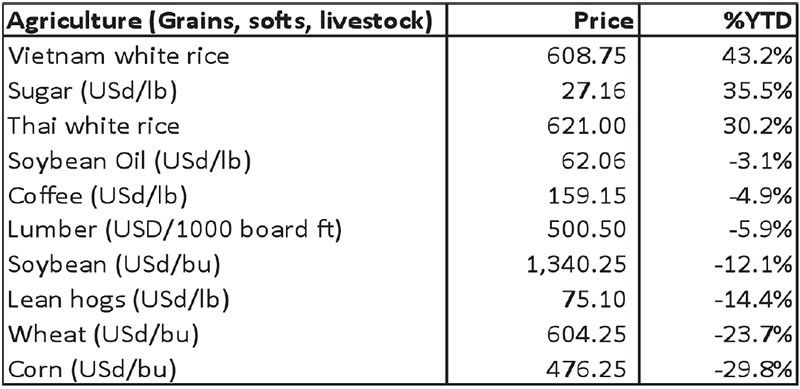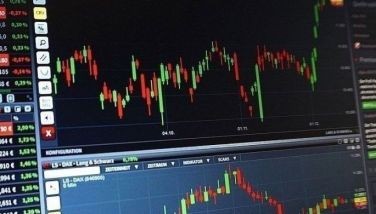Commodities 2023: A divergent landscape

Not all commodities have gone up like sugar, rice, and crude oil did this year. As noted in our recent articles, crude oil prices spiked after OPEC+ producers Saudi Arabia and Russia cut production despite tight global supplies. Meanwhile, the surge in rice and sugar prices can be attributed to various factors, ranging from extreme weather and poor harvests to protectionist measures.
However, the broader commodities landscape paints a different picture, with the majority seeing price declines this year.

Source: Bloomberg
Sugar
Sugar prices have surged 35.5 percent this year to 11-year highs. Poor weather conditions in several major producing countries have lowered crop yields and reduced harvests. Top exporters like India, Thailand, and China have tightened global supplies. Rising input costs due to high energy and fertilizer prices have further boosted prices.
Rice
Rice futures have climbed to their highest levels in 15 years. Key exporters India and Thailand have imposed trade restrictions to safeguard domestic inventories after drought and floods damaged crops. Benchmark Thai and Vietnam white rice are up 30.2 percent and 43.2 percent year-to-date.
Wheat and corn
In stark contrast to the soaring prices of sugar and rice, wheat and corn have been on a downtrend. Abundant exports from Russia have effectively mitigated concerns regarding supply disruptions stemming from the war in Ukraine. Simultaneously, bumper harvests from other major producing regions like the US and South America have replenished global inventories. Wheat and corn prices have declined 20 percent since a panic ensued when Russia withdrew from the Black Sea Grain Initiative in July. Year-to-date, wheat and corn are down 23.7 percent and 29.8 percent, respectively.
Energy prices
Despite the slowdown in China and the global recession risk, crude prices surged to 10-month highs. Saudi Arabia and Russia’s oil supply cut of 1,000,000 barrels and 300,000 barrels per day, respectively, have put significant pressure on prices. WTI crude is up 13.1 percent year-to-date, while Brent crude is up 9.3 percent. Gasoline prices have risen by 10.1 percent year-to-date.

Source: Bloomberg
Natural gas prices paint a different picture. Prices are down 41.1 percent year-to-date due to increased LNG exports to Europe, mild weather, and reduced demand. The reduction in Russian exports disrupted global supply, but other suppliers helped fill the gap.
Industrial Metals
Prices of key industrial metals remained on a downtrend. Year-to-date, nickel, zinc, and aluminum have fallen by 34.4 percent, 15.2 percent, and 7.9 percent, respectively. Tight monetary policies worldwide, the sluggish post-pandemic recovery in China, and slowing global economic growth are weighing on the demand and prices of these base metals.

Source: Bloomberg
For policymakers, this divergence highlights the differences in inflation dynamics across commodity complexes. For investors, understanding these nuances will be crucial for navigating markets ahead.
Philequity Management is the fund manager of the leading mutual funds in the Philippines. Visit www.philequity.net to learn more about Philequity’s managed funds or to view previous articles. For inquiries or to send feedback, please call (02) 8250-8700 or email [email protected].
- Latest
- Trending





























